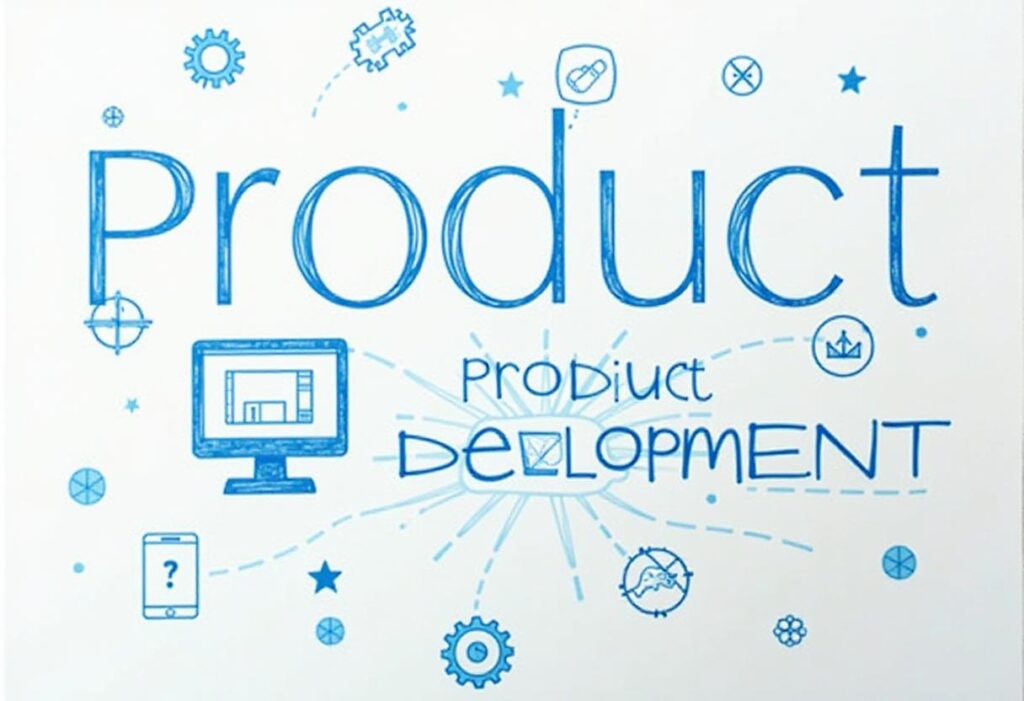Product development is the comprehensive process of creating, designing, and bringing a new product to market or improving an existing product. It involves multiple stages, where an idea evolves from a concept to a tangible product that meets market needs and user expectations. Successful product development integrates market research, design, engineering, prototyping, testing, and commercialization.
1. Idea Generation
- Goal: Identify opportunities and generate new product ideas.
- Activities:
- Market research: Identify trends, gaps, and customer pain points.
- Brainstorming: Generate a wide variety of ideas, both practical and visionary.
- Competitor analysis: Review what competitors are offering to identify how to differentiate your product.
- Crowdsourcing: Collect input and suggestions from external sources, including customers and employees.
- Outcome: A pool of potential product ideas.
2. Idea Screening
- Goal: Filter out unfeasible or irrelevant ideas.
- Activities:
- Evaluate the alignment of each idea with company objectives.
- Assess the potential market demand, feasibility, and profitability.
- Perform SWOT analysis (Strengths, Weaknesses, Opportunities, Threats) for each idea.
- Outcome: A shortlist of promising ideas worth further exploration.
3. Concept Development and Testing
- Goal: Develop product concepts and test them with target users.
- Activities:
- Create detailed product concepts, including features, benefits, target audience, and value proposition.
- Test these concepts through surveys, interviews, or focus groups with potential users.
- Gather feedback on which concept best resonates with the market.
- Outcome: Validated product concept(s) based on user feedback and preferences.
4. Business Analysis
- Goal: Assess the financial viability and market potential of the product.
- Activities:
- Estimate costs: R&D, manufacturing, distribution, and marketing.
- Perform break-even analysis and calculate the return on investment (ROI).
- Estimate potential sales volume and market share.
- Evaluate risks: technological, market, and operational risks.
- Outcome: A solid business case that justifies moving forward with development.
5. Product Design and Development
- Goal: Create the product through design and engineering efforts.
- Activities:
- Design: Create prototypes, 3D models, and technical specifications.
- Engineering: Develop the product’s technical and functional aspects.
- Iteration: Use rapid prototyping and iterative testing to refine the design based on functionality, usability, and manufacturability.
- User Testing: Involve potential users in testing prototypes and gathering feedback on usability, aesthetics, and functionality.
- Outcome: A working prototype or a minimum viable product (MVP) ready for further testing and refinement.
6. Testing and Validation
- Goal: Validate the product’s performance, safety, and user satisfaction.
- Activities:
- Internal Testing: Conduct functional, performance, and stress tests to ensure the product meets design requirements.
- Beta Testing: Release the product to a limited group of users to identify issues and gather real-world feedback.
- Compliance Testing: Ensure the product meets regulatory standards and certifications (e.g., safety, environmental impact).
- Outcome: A product that is refined and ready for full-scale production based on user and internal testing feedback.
7. Commercialization
- Goal: Launch the product into the market.
- Activities:
- Production: Set up manufacturing, sourcing, and supply chain operations for large-scale production.
- Marketing: Develop a comprehensive marketing strategy, including pricing, positioning, and promotional campaigns.
- Distribution: Determine sales channels (e.g., online, retail, direct-to-consumer) and logistics for delivering the product to the market.
- Sales and Launch: Execute the product launch, including product release events, PR, and advertising.
- Outcome: A successfully launched product that reaches the target audience.
8. Post-Launch Evaluation
- Goal: Continuously monitor the product’s performance in the market.
- Activities:
- Customer Feedback: Collect feedback from users to identify areas for improvement.
- Sales Monitoring: Track sales volume, revenue, and market share against initial projections.
- Product Updates: Based on user feedback and market conditions, update the product with new features or improvements (e.g., new versions, software updates).
- Outcome: A sustained and evolving product that adapts to changing customer needs and market dynamics.
The Role of Design Thinking in Product Development
Design thinking is often integrated into product development to ensure a user-centered approach. It helps teams empathize with users, define problems accurately, and create innovative solutions, making the process iterative and flexible. The focus is on solving real problems and designing products that provide value and enhance the user experience.
Summary
The product development process is dynamic, starting from idea generation to full-scale commercialization. It involves interdisciplinary collaboration, market research, design, prototyping, testing, and continuous feedback. The ultimate goal is to create products that meet user needs, provide value, and ensure business growth.
4o
